In response to the Israel-Gaza war, the Yemeni Houthi militias are threatening international shipping in the Red Sea. In the fight against their new low-cost weapons, the allies have to deploy very expensive missiles - simple versus sophisticated. Here is a review of the last twelve months (as at the end of November 2024) with an attached chronology of events. Included is a current addendum dated 23 January 2025 with an addendum dated 27 January 2025.
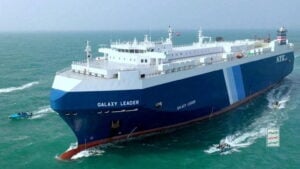
On 19 November 2023, six weeks after the Hamas attack on Israel on 7 October and three weeks after the start of the Israeli ground offensive in the Israel-Gaza war, the Houthi militias launched their seaborne support campaign for Hamas and Hezbollah by capturing the GALAXY LEADER near Al-Hudaida in Yemen. Its crew is still being held captive there today. A brief look at the effects of this new quality of threat at sea after twelve months is as follows: low success - astronomical cost. In around 100 attacks on civilian cargo ships in the southern Red Sea - the VDR (German Shipowners' Association) even speaks of almost 200 attacks - two ships were sunk, two were hijacked, more than two dozen fires were caused on board by missile or drone strikes and four seafarers were killed. Five to six per cent of goods transported by sea worldwide are now routed around the Cape of Good Hope instead of through the Suez Canal - with longer freight times and higher freight rates, but also a clear deterioration in the carbon footprint. It is the biggest attack on civilian trade routes since the Second World War, which is primarily directed against freight associated with Israel and its allies.
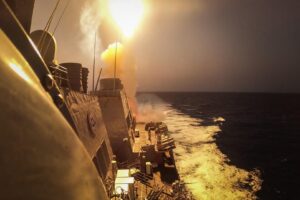
Protection of sea routes
Two multinational coalitions have decided to protect shipping traffic through the threat area for the sake of freedom of navigation: On 18 December 2023, US CENTCOM launched the American-led Operation Prosperity Guardian in Bahrain with Task Force 153, while the European Union's current Greek-led Operation EUNAVFOR Aspides was only launched two months later. Both operations are continuing unabated, as the complexity of the attacks has obviously increased, even if the intensity of the threat has recently decreased noticeably. This is largely due to the aerial bombardment of Houthi weapons and launch facilities in Yemeni regions.
Individual incidents and the range of experiences made in this threat environment were reported in the marine forum already reported on this occasion. A few summarising aspects are now provided here to supplement the overall picture.
First episodes
The Suez Canal Authority (SCA) and therefore also the Egyptian state suffered enormous losses of six billion dollars due to a 60 per cent reduction in the number of canal passages compared to normal years - at that time, ten to twelve per cent of world shipping traffic still took the route through the eye of the needle in the Middle East.
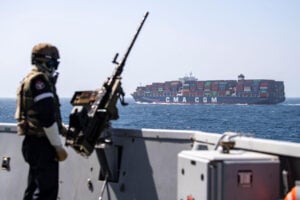
CMA CGM shipping company through the Red Sea. Photo: French General Staff
Expensive versus cheap
And it is the US Navy and the navies of its allies that are fighting in the theatre of operations with extremely costly missile technology against mass-produced, cheap weapons in order to protect civilian shipping and themselves. According to the Military Times, over the course of the last twelve months, around 85 ballistic and 45 cruise missiles, 250 to 280 combat drones and 32 drone boats have been intercepted in the Red Sea and the Gulf of Aden by on-board air defence and airborne components. In addition, around 200 ballistic and cruise missiles and around 120 combat drones were destroyed by air strikes in the insurgent areas, as well as 12 drone boats and over 50 radar stations, launch facilities and weapons depots. It can be assumed that more than one suitable means of defence had to be used to defend against each threat.
It is worth remembering that a standard missile for air defence costs two million dollars - but an Iranian-made combat drone costs only 2,000 dollars!
The Pentagon is understandably silent about these figures, but the change of direction in the provision of FK for the air defence systems speaks volumes! On the other hand, the high consumption of weapons can easily be converted into almost priceless, vital operational experience, as Germany was able to discover for itself with the frigate HESSEN.
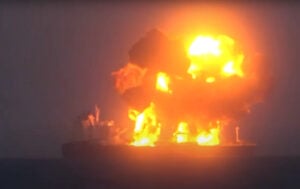
Losers and winners
Ultimately, however, the big losers are likely to be freight customers in general. For although at first glance the shipping companies and freight owners could be considered the paying victims, it is revealing that the shipping companies have in the meantime recorded an increase in profits of more than 40%! The costs are passed on at a premium - spread across all customers.
But it is also Russia and China that benefit from the Houthi attacks in the Red Sea, as they do not have to fear attacks on this shorter cargo route for their ships. And it gets even worse: as the Wall Street Journal was able to uncover, Russia supplied targeting data from satellites directly to the militias, which is far superior in quality to the Iranian data. The data was passed on by forces of the Iranian Revolutionary Guards, who are integrated into the Houthi militias. Whether this improved the low hit rate remains to be analysed. In any case, this must be seen as an active Russian intervention in the scenario, aimed at tying down American forces and destabilising trade routes worldwide.
In addition, an as yet unpublished report by the UN Security Council on the capabilities, finances and connections of the Houthi militias (UN Panel of Experts on Yemen) reveals that their most important source of income is currently covert payments from shipowners - in return for the promise that their ships will not be attacked. An independent counter-check is still pending, but at 150 to 200 million dollars a month, this adds up to a multi-billion-dollar road toll. That shouldn't really be possible - actually!
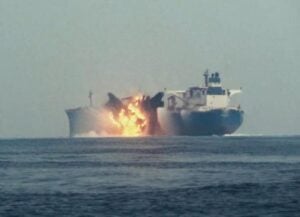
Crude oil tanker Cordelia moon, photo: Huthi media
Threatening gestures
In mid-November, a report from the VDR (German Shipowners' Association) raised eyebrows, reporting numerous and in some cases individualised threatening emails to German shipping companies operating in the region. The sender is the Humanitarian Operation Coordination Center (HOCC), an organisation presumably controlled by the Houthi militias to coordinate attacks on shipping in the Red Sea. An interesting choice of name for a war centre.
Powder shot?
Due to the numerous US attacks on weapons depots and launch bases in the Houthi-controlled north-west of Yemen, the initially abundant missiles and drones no longer appear to be available in sufficient numbers. This would explain why they are now only being deployed in batches. Obviously, the stocks supplied by Iran and manufactured by domestic industry have largely been used up. In turn, this means that weapons from newer production with advanced technology are increasingly being used. At the same time, more complex methods and means are being devised and imaginatively deployed.
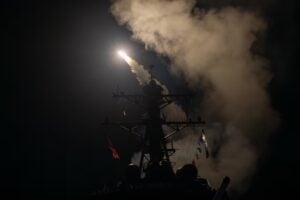
To be continued!
At the end of September, after a break of almost a month, the US Navy recorded a massive raid with two dozen projectiles of all kinds. The attack, which was coordinated with the Houthis' religious calendar, was announced by rebel leader Abdul-Malik al-Houthi as the "fifth phase of support for Hamas and Hezbollah". The most intensive bombardment since the escalation of the crisis in the Red Sea targeted the three Arleigh Burke destroyers of the ABRAHAM LINCOLN carrier group. The destroyers DDG 106 STOCKDALE, DDG 111 SPRUANCE (both Flight IIA) and DDG 77 O'KANE (Flight II) were in the area and suffered no hits or casualties.
It was not until mid-November that the same units came under heavy fire again with the same result. Three cruise missiles, five ballistic missiles and eight combat drones were recorded. This was preceded by a pre-emptive US attack against weapons depots in Yemen, where something had probably accumulated again.
In between, there were only three isolated attacks on civilian freighters, some with hits but without serious consequences.
Summary
A year of escalating threats in the Red Sea - permanent and highly dangerous overall, but almost impossible to pin down - sometimes tactically clever, but not always coordinated. The militias are happy with anything that works against the rule-based order and promises profits. Low cost - high efficiency. For the time being, it remains to be seen whether a ceasefire in the Middle East promises real détente in the longer term and whether the Red Sea can once again be navigated unmolested. The example could set a precedent - for the Houthis of this world.
With the current threat situation undiminished, the German government will extend the German Navy's mandate for its participation in EUNAVFOR "Aspides" until 25 October 2025 before the new elections on 23 February 2025. A vague threat scenario at the "Gate of Tears", which you should only enter if you are optimally equipped for it. But even very good equipment is no guarantee. Let's hope for the best in 2025.
Axel Stephenson
So much for the status at the end of November 2024 - here is the addendum from today, mid-January 2025
Financial background
In mid-January, before the change of president in the USA, the Office of Foreign Assets Control (OFAC) of the US Treasury Department imposed sanctions on the "Yemen Kuwait Bank for Trade and Investment Y.S.C." because it acts as one of the most important financial instruments for the Huthi militias. As with previous sanctions, trade bans for US citizens and the freezing of assets are intended to severely disrupt the financial networks that enable the militias to carry out their attacks on shipping traffic, the naval forces protecting them and the state of Israel. This bank is the link to the international financial market - it launders money and shifts the proceeds of Iranian oil sales to the Houthis, Hamas and Hezbollah.
Friendly Fire
An incident that is not entirely uninteresting for the German Navy should not be concealed, which occurred on 22 December 2024 shortly after the arrival of the new carrier group in the Red Sea during a mission of the fighter jets over land with simultaneous missile and drone fire on the carrier group from land: The cruiser USS GETTYSBURG, which was part of the group, engaged an F/A-18 tanker returning to the USS HARRY S. TRUMAN shortly before landing and another F/A-18 ten miles behind it lining up for the landing approach. The latter was missed by the missile by 30 metres, the tanker was hit - three seconds after the crew had been able to eject. Both pilots were rescued almost unharmed. The case is of course being investigated, but it shows that in this scenario, decisions have to be made in seconds - and not always the right ones!
A quick look inside the gearbox
Vice Admiral Brendan McLane, Commander of Naval Surface Forces, unexpectedly provided a more detailed insight into American ammunition consumption in mid-January 2025 as part of the Surface Navy Association's National Symposium 2025 on "Red Sea - Lessons Learned".
According to the report, more than 400 ballistic missiles, missiles or drones of the Houthi militias have been countered by US Navy ships, aircraft and submarines since October 2023. (Remark: This is consistent with the information obtained by the editorial team).
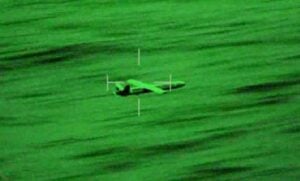
The ships alone fired around 120 SM-2 missiles, 80 SM-6 missiles and a total of 20 ESSM and SM-3 FKs. Among other things, 160 rounds of 127mm grenades were also fired. The ammunition consumption of the short-range air defence weapons, which were also used to defend against some of the 400 air targets, or the Tomahawks, which were used against land targets in Yemen, was not listed. (Remark: In view of the number of targets defended against, these figures appear to be somewhat "cautious". However, it also does not take into account the ammunition used by allied "Aspides" units, among others, to engage some of the above-mentioned air targets).
With prices of USD 2 million for an SM-2 and USD 4 million for a newer SM-6 and from USD 10 to almost USD 30 million for a very high-range SM-3, the sums involved over the last 15 months have already totalled well over USD 500 million for the missiles alone.
With increasing "operational routine" - slightly hardened, so to speak - it makes sense to use less high-quality weapons in defence against low-cost drones. It was also recognised that some drones could alternatively be fought by fighter jets and helicopters from the carrier groups - although the cost of flying hours should not be underestimated.
What is more worrying, however, is the replenishment of ammunition, which is also being used in the Ukraine war and by Israel at the same time, and the ammunitioning of the launch silos on board not far from the respective deployment area - or, more recently, directly at sea. This is not so much about the current conflicts, but about the medium-term risk of a conflict in the Indo-Pacific. The ramp-up of national weapons production after such unusual consumption is much more time-consuming than expected.
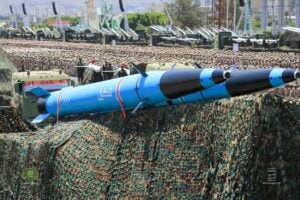
Desert propaganda
The Houthi militias themselves claim to have deployed 1,255 ballistic, cruise and hypersonic missiles as well as combat drones and surface-to-air drones. (Editor's note(This figure seems a little high, but if you add up all the ammunition destroyed on land and fired at sea, you get close to this number). The Huthi thus claim to have successfully expelled the ABRAHAM LINCOLN carrier group from the Red Sea shortly before the end of 2024 - which, however, had only carried out a normal disengagement from the combat area towards the end of November, only to be replaced by the current HARRY S. TRUMAN carrier group just under a month later.
Reminder: In mid-October 2023, the DWIGHT D. EISENHOWER carrier group (CVN-69) entered the scenario from the Mediterranean, remained there for eight months and returned to Norfolk/USA in mid-June 2024. One week later, the THEODORE ROOSEVELT carrier group (CVN-71) entered the Red Sea from the south from the Indo-Pacific, remained there for three months and returned via the Pacific towards San Diego/USA at the end of September 2024. The ABRAHAM LINCOLN carrier group (CVN-72) had already been in the area for a month before returning home to San Diego at the end of November, also after three months. The HARRY S. TRUMAN carrier group (CVN-75) did not reach the operational area until mid-December 2024, coming from the north from the Mediterranean.
This carrier group will now be chased out just as resolutely and successfully if the ceasefire between Israel and Hamas - according to the Houthi militias - does not hold. As is so often the case, propaganda and reality are far apart!
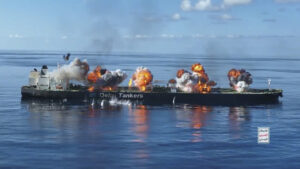
A last stand
At the turn of the year, the newly arrived carrier group, together with the US Air Force, carried out a fierce attack using Tomahawks (US land-based cruise missiles) against production facilities and storage sites, as well as a coastal radar station and freestanding missile launchers belonging to the Houthi militias. In response, the leadership of the Houthi militias announced a further strike against the American unit on 17 January 2025, shortly before the ceasefire agreement in Gaza came into force - the seventh major attack in four months. Two days later, the eighth wave was loudly announced - both actions without any impact on the US units, by the way - before signalling on 22 January that the attacks on maritime traffic would be significantly restricted in order to support the ceasefire that had actually come about in the Gaza Strip.
Latest news (23 January 2025)
The release of the 25-strong crew of the detained GALAXY LEADER from the Philippines, Mexico, Romania, Bulgaria and Ukraine is also in line with this, as reported by the BBC. They were handed over to the Omani authorities today after months of negotiations by the IMO (International Maritime Organisation).
Addendum dated 27 January 2025:
On 22 January 2025, the USNI (United States Navy Institute) referred to the Associated Press when it reported that Hamas had asked the Houthi militias to release the crew of the GALAXY LEADER. On that day, the new American president issued a decree, along with numerous others, reclassifying the Houthis as a "foreign terrorist organisation" (FTO), as Trump had already done during his first presidency. The US State Department had reclassified the Houthis as a "specially designated global terrorist organisation" (SDTO, including Al-Qaeda, Islamic State, Al-Shabaab, Hamas, Hezbollah, Boko Haram, etc.) in January 2024. This means that the Houthis are once again subject to the American "gold standard" when it comes to sanctions, i.e. a ban on US entry, a ban on any support from third parties and the possibility of legal action for victims and injured parties. This is accompanied by the interruption of all diplomatic contacts, e.g. for a solution to the conflict within Yemen.
The "benevolent" narrative of the Houthis that the release was due to the ceasefire in Gaza therefore has a different background: The Huthis may have wanted to pre-empt the presidential decree in order to prevent it. While the previous government was only interested in "keeping the Houthis in check" by attacking command posts, weapons depots and production facilities, the Trump administration is now concerned with fundamentally destroying the military capabilities of Ansar Allah (official name).
The year is starting better than the previous one ended. Can it stay that way?
ajs
War in the Red Sea: A chronology
7 October 2023
Attack by Hamas brigades on Israeli settlements and events in the Gaza Strip.
10 October
Declaration of a state of war by Prime Minister Netanyahu.
19 October 2023
The first ballistic missiles are fired against Israel from the area of Yemen controlled by Houthi militias. USS CARNEY (DDG 64) was able to successfully combat cruise missiles and drones on its way north shortly after passing through the Suez Canal.
27 October 2023
Start of the Israeli ground offensive in the Gaza Strip.
19 November 2023
GALAXY LEADER, car transporter, is hijacked by Houthi rebels with Iranian help near Al-Hudaida. The spectacular hijacking, accompanied by media coverage, marks the beginning of the naval campaign.
25 November 2023
CENTRAL PARK, chemical tanker, is boarded by armed persons in the Gulf of Aden. USS MASON captures 5 Somali pirates. Two ballistic missiles miss both ships.
14 December 2023
MAERSK GIBRALTAR, near Bab al-Mandab, is narrowly missed by missile. Maersk temporarily suspends its voyages through the Red Sea. Other shipping companies follow suit, serious disruption to global shipping is looming.
18 December 2023
Start of Operation Prosperity Guardian as a multinational security initiative under the leadership of Task Force 153 (US CENTCOM, focussing on security and freedom of navigation in the southern Red Sea and the Gulf of Aden). A kind of "motorway patrol that approaches merchant ships in the region and provides protection when needed" (Pentagon).
30 December 2023
With the start of "Prosperity Guardian", Maersk decides to resume transits through the Red Sea. When MAERSK HANGZHOU is attacked with missiles and almost boarded, Maersk reroutes its ships around the Cape of Good Hope for the "foreseeable future". Numerous shipping companies suspend their voyages through the region.
3 January 2024
An international coalition condemns the Houthi attacks and warns of serious consequences - the warning is ignored.
9 January 2024
Huthis launch massive barrage on shipping traffic in the Red Sea - coalition ships and jets intercept 18 combat drones and 3 maritime target FKs. First major attack by the Huthi.
11 January 2024
US/UK forces carry out first airstrikes on Huthi weapon positions in Yemen (radar systems, missile depots, launchers).
24 January 2024
Two US-flagged Maersk Line ships carrying US government cargo and escorted by the US Navy are attacked. Maersk cancels all sailings in the region.
26 January 2024
MARLIN LUANDA, tanker, is hit by a Huthi missile in the Gulf of Aden and set on fire, can be extinguished with Indian help - no injuries.
18 February 2024
RUBYMAR, bulk carrier, is hit by ballistic ASM and sinks after two weeks - first sinking of the Huthi militias. RUBYMAR at anchor damages three of the six underwater data cables in the Red Sea. Environmental hazard for the Red Sea due to 21,000 tonnes of fertiliser.
19 February 2024
EU Foreign Affairs Council decides to launch EUNAVFOR "Aspides" as part of the CFSP in order to restore and guarantee "freedom of navigation in the Red Sea and the Gulf of Aden".
6 March 2024
TRUE CONFIDENCE, bulk carrier, is hit by a missile near Aden. The first civilian casualties of the crisis are 3 seamen.
12 June 2024
TUTOR, bulk carrier, hit at the stern by unmanned small boat, then second hit from the air. Ship sinks a week later, one fatality. First successful deployment of an overwater drone.
13 June 2024
VERBENA is hit by 2 missiles, fires cause considerable damage. Seaman with serious injuries is evacuated by US helicopter. Crew forced to abandon ship and sends distress call. The Iranian frigate JAMARAN, 8 miles away, does not respond.
21 August 2024
SOUNION, a tanker with around 1 million barrels of crude oil on board, is attacked several times in the southern Red Sea, after which Houthi fighters detonate explosives - the fires last for over a month. The SOUNION's cargo capacity raises fears of an environmental disaster greater than the EXXON VALDEZ oil spill. Burning tanker is towed to safety off Eritrea under the protection of the EU operation "Aspides". Team of experts can only extinguish all fires at the beginning of October. The deliberate risk of an oil disaster is averted.
27 September 2024
After a four-week break, massive, coordinated fire on three destroyers of the TRUMAN Carrier Group with more than 20 projectiles of all kinds (ballistic and cruise missiles, one-way-attack UAV) without hits or casualties - most intensive attack since then.
16 October 2024
US CENTCOM carries out airstrikes with long-range bombers on five hardened underground Huthi missile and ammunition bunkers in Yemen.
13 November 2024
After a pre-emptive US attack against weapons depots in Yemen, another complex bombardment of US units in the Red Sea with at least 16 projectiles of all kinds - with the same result as six weeks previously.
Not listed are one hundred further attacks on civilian ships without direct hits, or with hits and damage, but which did not or only temporarily impede onward navigation.
Also not listed are the countless repulsed individual attacks on military units of all participating nations, which can be viewed in more detail on militarytimes.com.
Link:
ajs

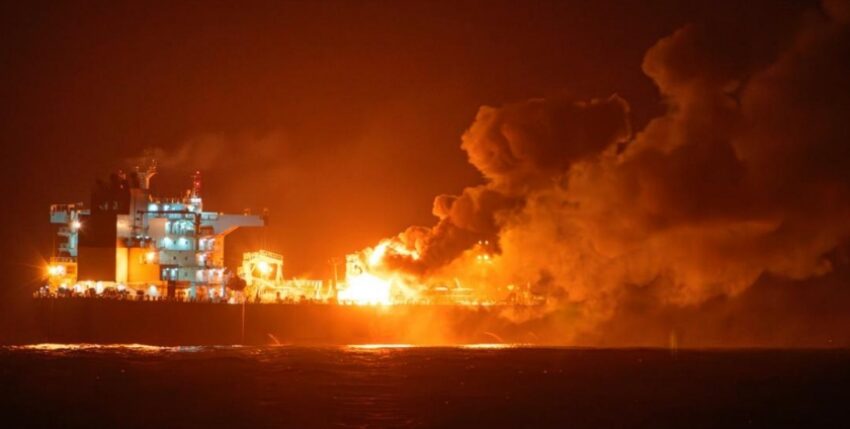









One Response
I find it astonishing or rather surprising that the western industrialised countries, above all the USA, do not hold the Arab countries bordering the Red Sea and the Persian Gulf to account for protecting this shipping route. In any case, we hear and read nothing about it.
After all, Egypt lives largely from the Suez Canal fees. Saudi Arabia and the Emirates are dependent on this passage for their oil exports via their harbours in the Red Sea (Saudi Arabia) and the Gulf (both countries, as well as Kuwait) (they are probably frustrated by their inconclusive war against the Houthis a few years ago). I would be interested to know if there are any findings on this complex that are not being publicised.